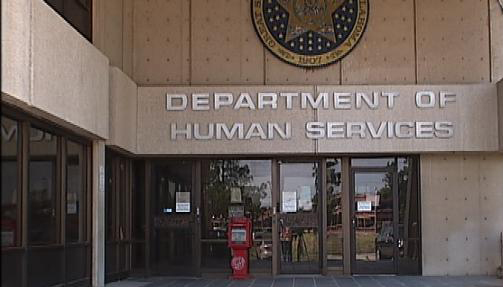Oklahoma City —Neutral monitors of the Oklahoma Department of Human Services’ efforts to improve targeted areas of the foster care system have released their April 2016 commentary outlining the agency’s progress.
The “co-neutrals” as they are called have been providing expert technical assistance and monitoring DHS’ good faith efforts laid out in a comprehensive, five-year foster care reform plan called the “Pinnacle Plan” which was developed after the 2012 settlement of a class-action lawsuit against the system.
The monitors determined DHS is making progress or has the strategies in place to make progress in more than 80 percent of the agency’s goals and objectives in the reform plan; however, there are still areas where the state is working to make improvements such as the rate of abuse or neglect in care and helping children to achieve permanency faster.
“In less than four years, this agency has made tremendous progress in making improvements not only to the foster care system, but in reforming Oklahoma’s entire child welfare system,” said DHS Director Ed Lake. “In a system as complex as ours, we know that immediate improvement does not necessarily equate to long-term success. We are looking far down the road in implementing plans and practices that stand the best chance to sustain the improvements we are looking for. It is not sufficient to simply improve the numbers and measurements in the short term only to lose that momentum later on.”
DHS key areas of progress:
- Reduction in shelter usage: The decision to close the state-run shelters was a major change in culture and practice. Workers and child advocates are still adjusting to this change and despite challenges, children are being better served. Even use of local youth services shelters is significantly reduced.
- Caseworker visitation and improvements in caseloads: The investment in the agency is paying off with more workers, lower caseloads, and less turnover of frontline workers.
- Increased permanency through adoption: Last fiscal year, more than 2,100 children were adopted from the foster care system.
- Foster care recruitment: DHS has made significant efforts to recruit foster families along with private agencies and faith partners. More than 721 new foster families have been approved through the end of March 2016, with the goal of around 1,000 new families by June 30th.
“Our ultimate goal is to have a system that preserves families when children can be safe from harm. If that is not possible and children must be removed, we seek to place with relatives first,” said Lake. “When relatives are not appropriate or available, then placement will be made in family-like settings that are safe and appropriate for each child’s individual needs. While children are in foster care we are striving to provide every family with the necessary supports and resources that result in safe, timely reunification. When reunification is not possible, we will work as quickly as possible to achieve an alternate permanency goal for children through adoption or guardianship.”
To achieve these goals, effective tools must be developed and remain in place that keep children safe long after the settlement agreement is resolved and DHS is no longer overseen by the co-neutrals.
High quality child welfare systems have certain fundamental characteristics in common, all of which have an impact on the safety of children in care. Manageable workloads allow workers to spend more time with children and families. A robust supply of well-trained and strongly supported foster families allows for better matching of homes to the needs of children. Prevention and safety services are available to families so only the children who need to come into state care are removed from their parents. Children who are removed are immediately placed into home-like settings without overnight stays in emergency shelters. And children who cannot be reunited with their parents are adopted or have permanent family connections.
DHS has made and continues to make improvements to Oklahoma’s system, but this work cannot be done by this agency alone. The agency has formed or expanded partnerships with other state agencies, the courts, law enforcement, tribes, and private groups such as child advocacy organizations, foster care agencies, the faith community, philanthropic organizations, provider agencies, and the business community.
The agency works hand-in-glove with the co-neutrals and together has continued to evaluate the effectiveness of strategies being implementing throughout the life of the Pinnacle Plan. Through this evaluation, DHS determined that more targeted strategies were needed to address abuse and neglect in care. Agency leaders worked with the co-neutrals to develop this latest set of core strategies:
Group Homes and Facilities:
- Policy, practice, and technical enhancements: timely and improved communication between providers and child welfare staff when safety threats are identified; reduced response times to implement corrective actions; and, establish accountability measures.
- Provider Contract Enhancements: Mandate use of a standardized, research-based, and trauma-informed model of positive behavior management, and DHS ability to impose financial consequences to non-compliant providers.
- Heightened Monitoring: concentrating efforts on providers that have high numbers of abuse and neglect reports.
Foster Homes:
- Improving the review of background checks and child welfare history for the initial and ongoing approval of foster homes
- Comprehensive review of any allegations of abuse or neglect, investigations or policy violations
- Mandated management approval of placements exceeding policy limits on the number of children in the home and enhanced support by caseworkers
“Because the safety and well-being of the children entrusted to the agency’s care is our highest priority, every improvement we have made is intended to keep children safe while ensuring they receive the best quality of care,” said Lake. “It is taking time for all of these system improvements to make an impact on the rate of abuse or neglect in care, but we have started to see positive results during the last quarter of 2015 and are confident we will continue to see the safety of children in our care improve.”




Be the first to comment on "DHS Director on neutral monitors overseeing child welfare progress"